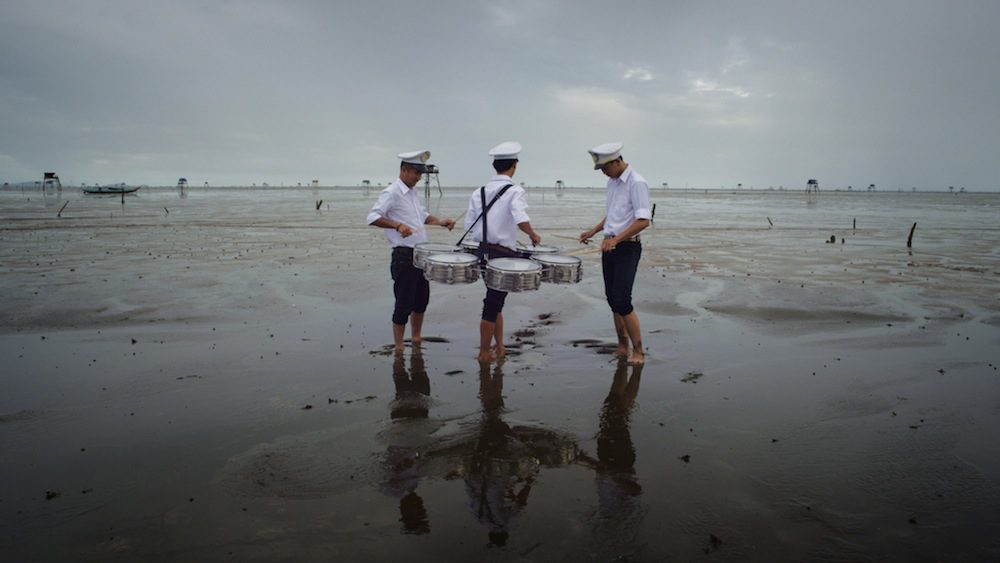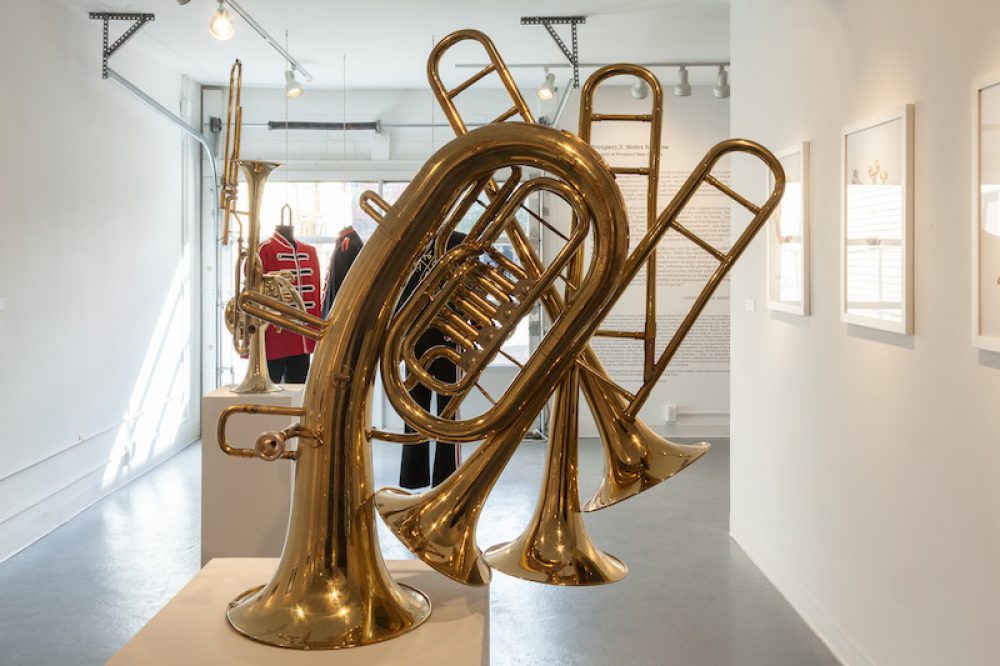Let There Be Light: The Propeller Group with Christopher Myers
Benjamin Morris reviews the Prospect.3 exhibition at the UNO St. Claude Gallery.

The Propeller Group, The Living Need Light The Dead Need Music, 2014. Single channel video (still). Courtesy the artists and Lombard Freid Gallery, New York.
Among the gifts that the English Romantic poets gave the arts was the notion of “negative capability”—an idea first expressed by John Keats. In his words, it is the state in which “a man is capable of being in uncertainties, mysteries, doubts, without any irritable reaching after fact and reason.” Though Keats never visited Southeast Asia, his concept of comfort and even transcendence in the unknown usefully applies to The Living Need Light The Dead Need Music, a twenty-minute film by The Propeller Group. Shown in tandem with Echo in the Bones, a mixed-media installation by Christopher Myers, the works jointly explore the linkages between the culture and landscape of Vietnam and New Orleans.
The Propeller Group’s film opens familiarly enough. Scenes of a brass band processional are juxtaposed with shots of empty alleyways and crowded backstreet markets, not unlike what one would find off Frenchmen Street or AP Tureaud Boulevard, particularly during second-line season. The soundtrack’s slow, languorous dirge pulls us in, but within a few minutes all notions of the known have caught flame and curled to ash. A succession of spirit guides, from sword swallowers and fire breathers to snake handlers lead us through an unidentified urban landscape into the wilds of the Vietnamese countryside.
The sense of dislocation at each new twist in the journey is key: presented in rapid montage, most shots in the film are no longer than a few seconds. Despite this swift, almost erratic style, each shot is carefully composed, yielding a dreamlike everywhereness and nowhereness—as in the David Lynch of Mulholland Drive or Inland Empire. Some of these locations could be recognizable, such as overgrown Catholic cemeteries and Buddhist ancestors’ shrines; most are anonymous landscapes such as forests or swamps. Populating these landscapes are ceremonial warriors engaged in mock battle, brass band musicians bearing strange instruments in unlikely places, and a central androgynous shapeshifter, who is a seductive street dancer entwining herself in flames in one scene and a raffish neighborhood youth in the next. In a haunting recitation that is part-voiceover, part-soundtrack, these scenes are accompanied by a man singing in poetry simply too beautiful to excerpt here.
Part of the strength of the film is its refusal to engage in explicit argument or linear narrative, recognizing instead that in dreams, organizing principles are often fragmented, and that when properly arranged, color, light, texture, and form need no argument. Through their evocation of forbidden and liminal places, abattoirs, mangrove swamps, and empty temples all invoke the surreal and the mysterious, the boundaries between worlds, feelings, and spaces that too often we choose to shun for the sake of the known. This is not to say that The Living Need Light The Dead Need Music aims simply to disorient; such a gesture would be too easy, even puerile. The point is to invite connections without commanding what they need be.
The more explicit linkage is provided by Myers’ work. In his installation of photographs and inventive, re-imagined instruments—all of which appear in the film—objects that once felt foreign are repositioned as part of the regalia of local high school students, the incubator for our own brass bands. In linking places that are geographically distant but topographically close, the show bridges a gap between Southeast Asia and southeast Louisiana that stimulates visual conversation between these two places and cultures, invigorates a recognizable local iconography with a fresh twist, and allows those objects we might see in our dreams to bleed into our waking lives. The show leaves the viewer hungering for more: for more of these landscapes, for more of these enigmatic figures, for more of what happily eludes comprehension. And herein lies its only significant weakness: as with most dreams, this one is over too soon.

Installation view of Christopher Myers' Echo in the Bones, 2014, at UNO St. Claude Gallery, New Orleans. Courtesy the artist.
Editor's Note
The Living Need Light The Dead Need Music and Echo in the Bones on view as part of Prospect.3 through January 25, 2015 at the UNO St. Claude Gallery (2429 St. Claude Avenue) in New Orleans.



